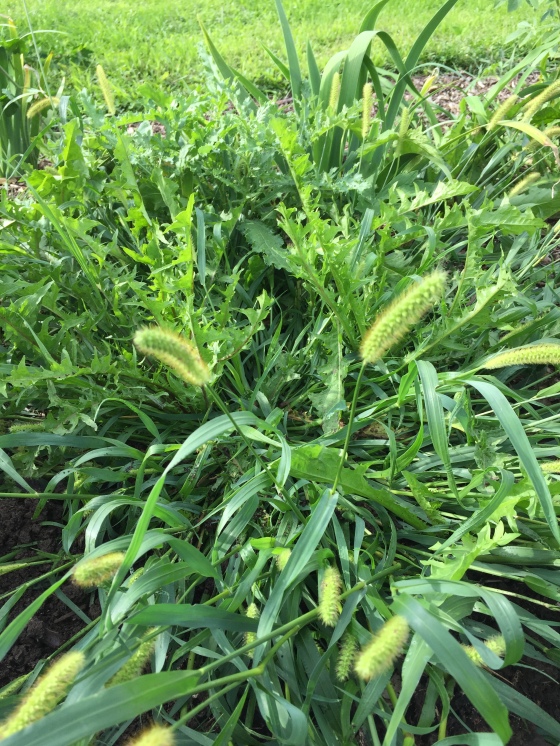
Are you in a battle against weeds? A lot of the articles I have read about weeds argue it is important to know what kinds of weeds you have in order to effectively control or combat them. But I would also argue that it is important to understand why they are in your garden in the first place. Their presence tells a story, and I have come to learn that they cannot be beat. We must join them!
Since owning this farm, I have learned a lot about weeds, how to manage them and how to get completely bamboozled by the little stinkers! Weeds in the country are brawny and bold. They will not stop or pause for much. I have come to understand why it is that farmers use herbicides, because stopping a weed from doing its job is next to impossible. That’s right, weeds have work requirements, and contrary to popular belief, their main duty is not to aggravate humans! I try to empathize! Weeds do a great job protecting our top soil from eroding. Weeds spread low and wide often to do this. Other weeds send down long tap roots to bring minerals up out of the soil, and some weeds deliver nitrogen to nearby plants. And we all know, bees love their flowers!
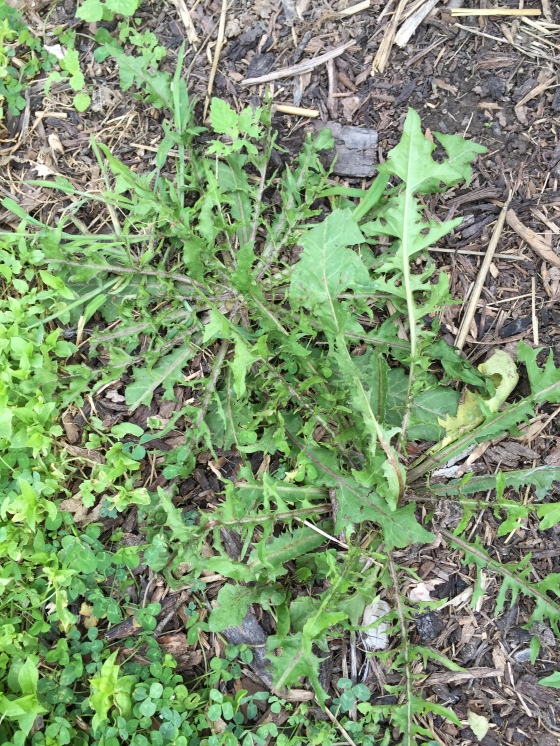
Here we see the spread of dandelion, crab grass, clover and chick weed all working together to cover unprotected soil.
Of course, my vegetables have a hard time growing with too many weeds as neighbors, so I do have to work at taming them.
When we first moved here, our first line of defense against the weeds was the mower. Mowers are very handy machines that are quite effective at keeping weeds at bay. Continuously cutting them back often causes their demise. If not complete death, they are at least stunted or camouflaged as lawn.

Weeds in the gravel driveway!
This Spring was early which gave the weeds a jumpstart. By June my gravel driveway was completely invaded with weeds that had nestled in between the small rocks and set roots. What do you do, weed your driveway? I figured there must be an ecological perspective about how to manage this problem. I need the driveway to give support to the cars or they would squish down in the soil when it rains. In my quest for an answer, I read an article about seeding runways in Alaska with fescue. That seemed to be the answer to my problem. I seeded the driveway and now mow it very short. It hasn’t completely filled in yet, but it actually looks very nice – a little hard to find the driveway from the road – but visually attractive. The weeds can still be on the driveway, but they will be camouflaged by grass. I can live with that.
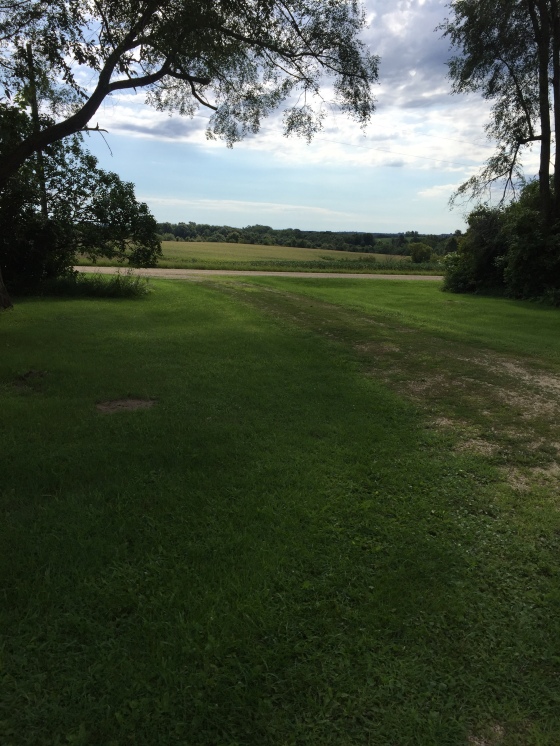
Driveway after seeding (first year).
But what do you do about the weeds that are in the cracks, under trees and in other hard to reach places? Well, in the city a layer of landscape fabric and 4-6 inches of mulch usually does the trick. Out here, that’s laughable! I found out the hard way that weeds in the country simply pop right up out of landscape fabric no matter the thickness or industrial strength. Mulch also poses a problem in that its little crevices are the perfect place for all the airborne seeds to land. One year after mulching in the country, you will likely find a whole slew of dandelions, burdock, thistle or crab grass just to name a few. Mulch is really just compost feeding any happy seed trying to grow in it. It seems to me that anything that will cover and fill in quickly is key. Our farmhouse gardens have these plants growing like living mulch and they do a great job making the landscape look attractive and weed free.

White blossoms, loves shade, doesn’t spread overly quickly…no idea what it is.
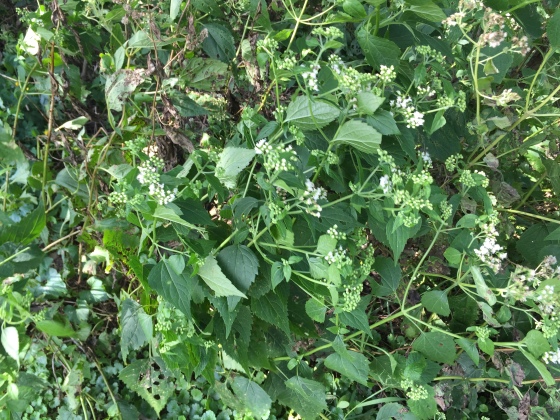
No idea what this is called.
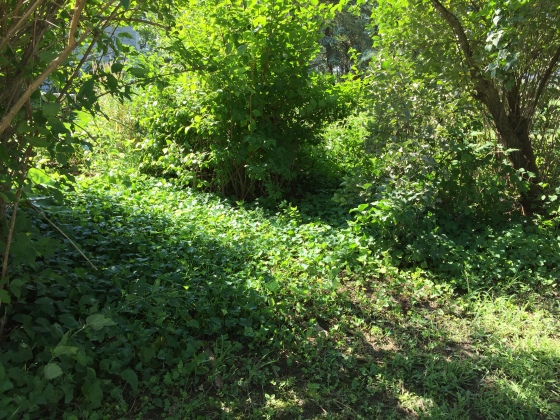
Violets cover the perennial bed between Lilacs and Mock Orange bushes.
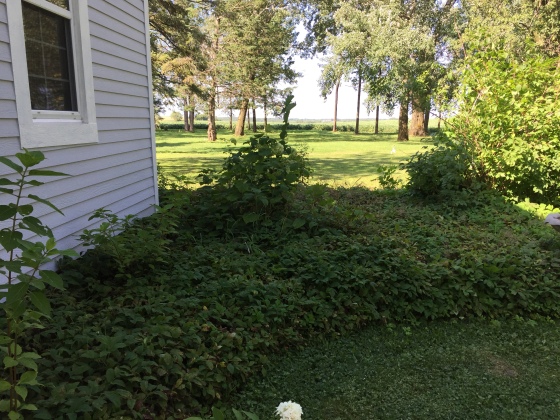
This stuff looks like Queen Anne’s Lace when blooming in June, but it’s low-growing and does not have a tap root like the wild carrot. Anybody know?
In my quest for weed management, I also learned about energy displacement. Take burdock for example. Burdock sends down a deep tap root and foliage that resembles rhubarb. If you let it grow, in the late summer it has spiny little flowers with a pinkish purple hue. These lovely spiny flowers dry out and become the burrs that cling to your dog’s fur as they run for a stick. But, if you know how burdock grows, you will know that it takes two years to flower. The first year it spends its time making a huge tap root and lovely foliage. The second year the root grows again and by mid summer, it will send up a shoot where the seed heads will form. If you cut it right around the time it is trying to seed, you kill its energy supply. You can also effectively kill it by chopping burdock off just below the surface of the soil – basically slicing the top off the tap root. The last week in June or first week in July has jokingly been dubbed, “Burdock Eradication Week.” I spend the week with a sharp shovel or edger jabbing the huge foliage leaves off the root. I have not completely eradicated the burdock from my property, but with careful management like this it is doable. Cutting back the burdock provides a huge nitrogen supply for my compost!

Pretty burdock flowers!
Thistles on the other hand! What the heck! I get that these guys are 1) prolific, 2) tenacious and 3) bringing minerals to the surface, but they will beat you off if you move into their house!
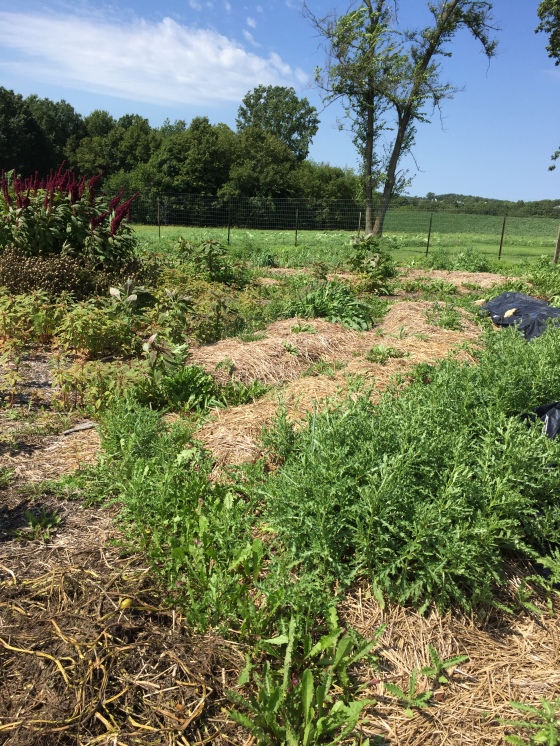
Thistles in mass where potatoes once grew. This area has raised beds with at least four inches of straw to cover. We laid industrial grade landscape fabric under six inches of wood chips last year. This year, thistle mass despite black plastic!
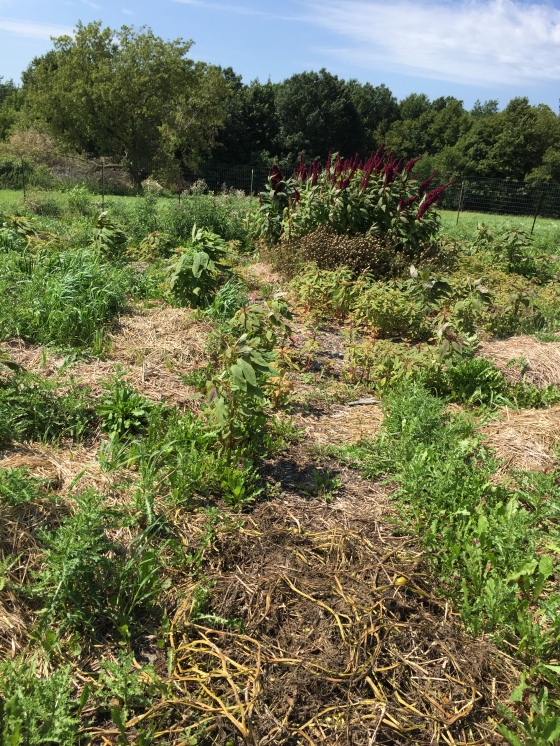
The LOST Garden – completely overrun with amaranth and thistle.
And, I apparently moved into their house. Last year we built our second permanent raised bed circle garden and enjoyed one year of perfection. The garden was a beautiful addition to the property and I had lots of fun with the extra space. This year, however, is another story. Our warm winter, very little snowfall and early spring allowed for the weed seeds to get a head start, and the thistles celebrated! Last year I kept them smothered in straw, green manure and garden plants. This year they had a homecoming party before I even got into my galoshes to check out the gardens. I tried in vain to pluck them into submission, but by the end of June I had to quit. I shut the gate on their house and will not return until next year with a new strategy in my back pocket.
These guys need the old-fashioned till and dry treatment first. I’m thinking constant cultivation will help sprout, dry and kill a few of these buggers. Then I’m hoping buckwheat as a cover crop and its allelopathic tendencies will help prevent lots of seeds from germinating. To help keep the soil covered and not invite a new crew of weeds, I will till in the buckwheat and seed with winter rye. That will help smother out the little rascals in the fall and spring. Once that gets tilled in, I will have the added benefit of improved soil. I may even repeat the whole process again with another round of buckwheat and rye before I even consider planting another vegetable garden in that spot. Don’t I sound smart! Watch for future “eat crow” episodes where I again honor the weed! Any suggestions besides, “Hey, Sarah! Use Roundup!” are welcome.
So, what have I learned about living in the country? First, I have learned a little about how to manage weeds, and that there is a whole lot I don’t know! More importantly, I have learned to find ways to live with them. It seems that understanding their purpose has helped me feel better about coexisting.

